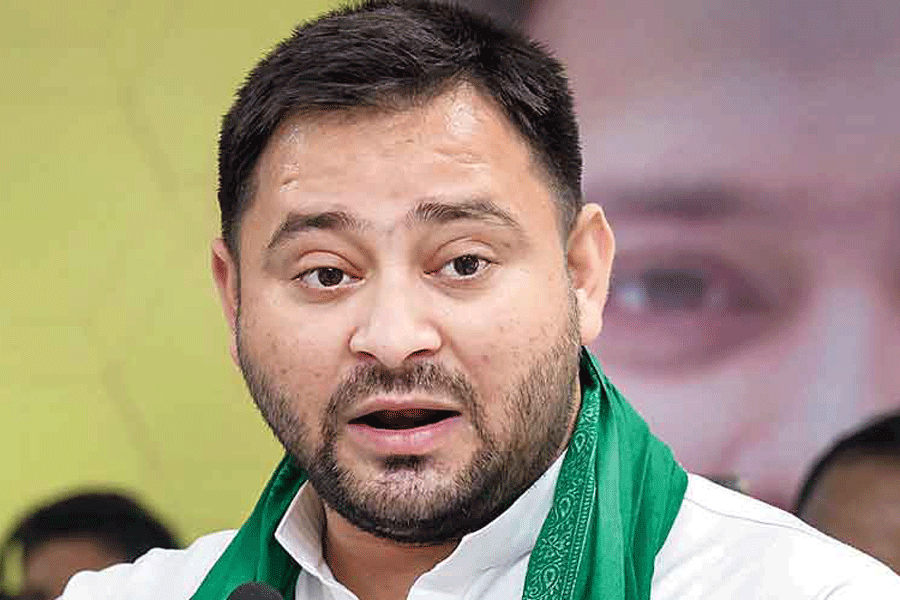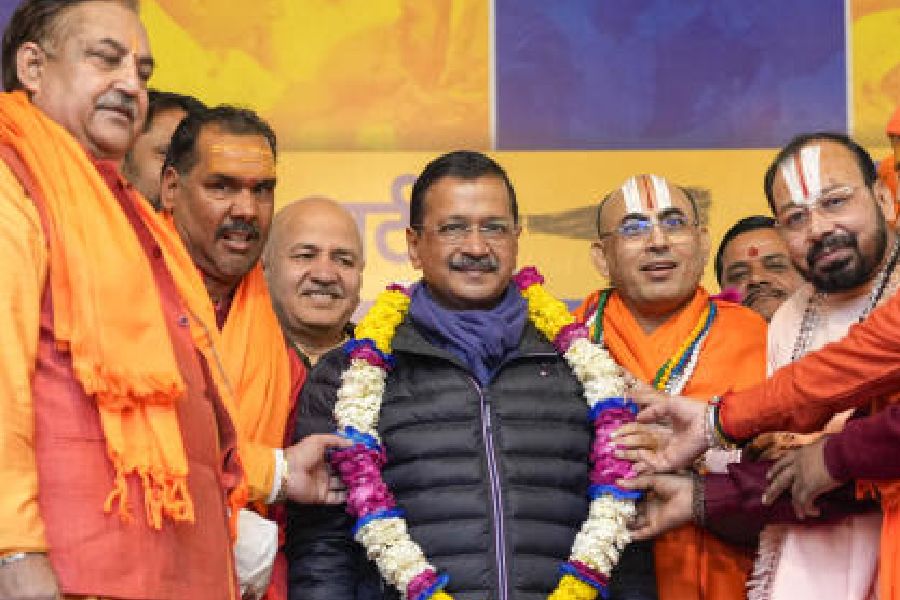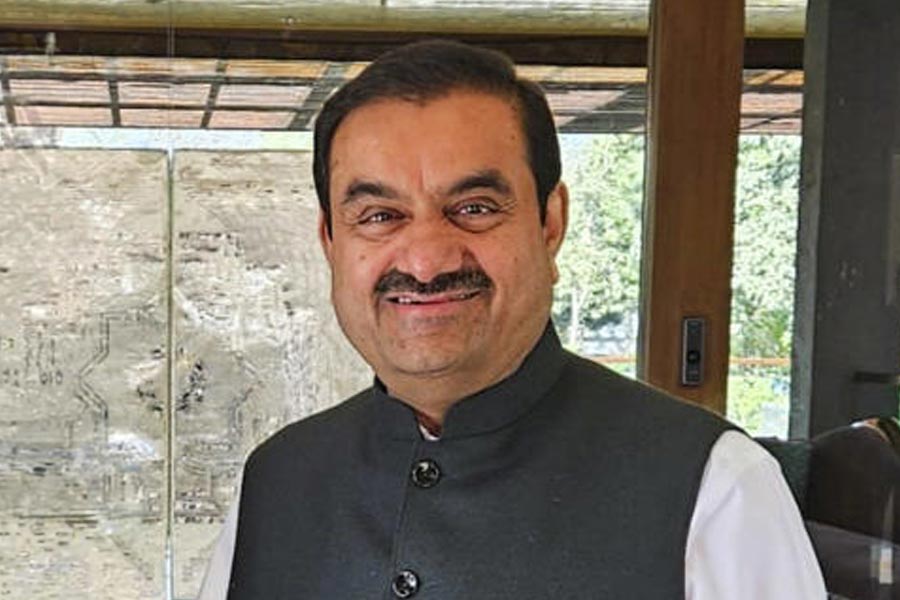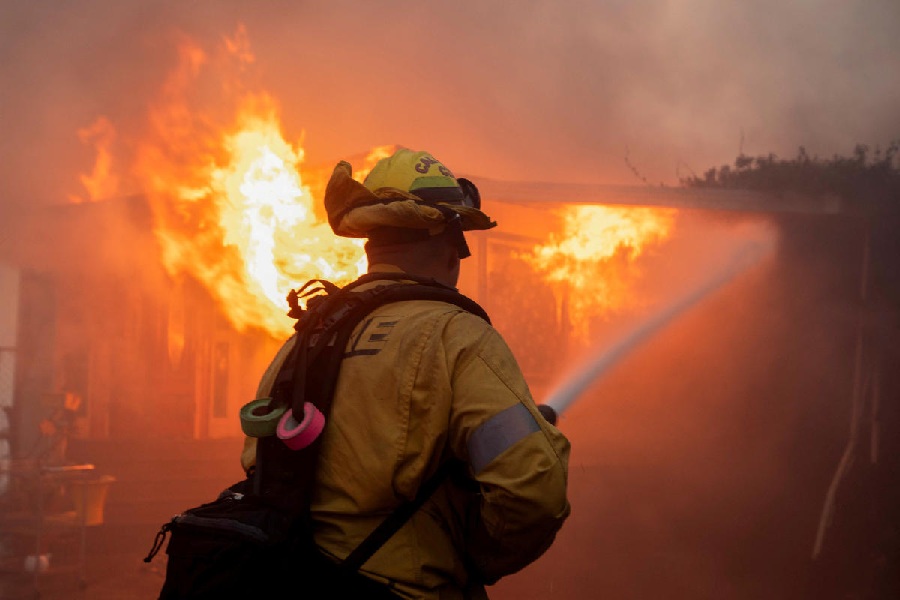An arresting exploration of fear lingers in the mind weeks after the staging of Samskritiki Shreyaskar’s Pratikatha at Gyan Manch (picture, left). In the piece titled Fear, the musicians onstage are in darkness and an area of dimly-lit gloom is etched out for the dancer-choreographer duo, Debashree Bhattacharya and Sohini Debnath. Debapriya Adhikary’s shaky vocals, Samanwaya Sarkar’s ominous sitar strokes, the rumble of the tabla, the whispered words in the dancers’ voices evoking fear and a ghostly stillness create an eerie soundscape for the choreography, which is centred around recurring motifs of arms rising in self-defence, corkscrewing pirouettes and an embodiment of overwhelming terror.
![Deedhita Singha's Bharatnatyam, Ghanashyam, at ICCR [Archan]](https://assets.telegraphindia.com/telegraph/2024/Aug/1724471198_arts2.jpg)
Deedhita Singha's Bharatnatyam, Ghanashyam, at ICCR [Archan] Sourced by The Telegraph
The piece was bookended by Manmohini, an attempt to celebrate and illuminate the art and life of courtesans, and Sare Panch, a dance piece set to a vocal composition in five-and-a-half-beat cycles. The former is an exploration of shringar — love — subtly examined through gaze and nuanced gestures. The protagonists are seen as self-possessed professional performers who are deeply immersed in the practice of their art. The final piece, with its invocation of Shiva, is themed on strength. Bhattacharya and Debnath’s compelling duets are more about restraint than expression as they join to tell different parts of the same stories through complementary movement patterns.
Deedhita Singha, who recently performed a Bharatanatyam solo titled Ghanashyam at the ICCR auditorium under the aegis of Karigar, is hypnotically lovely to watch (picture, right). Her repertoire for the evening, choreographed by her guru, Sayani Chakraborty, was a lavish invocation of Radha and Meera through an alaripu, a Meera bhajan presented as a varnam, an ashtapadi and, finally, a tarana. Ghanashyam is a sumptuous celebration of monsoon, replete with nature imagery that segued into the mythological narrative and performed with the dancer’s innate flair for storytelling. It equally deals with abstraction. Singha owned the stage, worshipping the ideals of symmetry, balance and beauty. She is a swift and light mover who tells the stories of the two women deeply enamoured by Krishna with a profound sense of yearning.
Just a thought to chew on for the young dancer with immense possibilities: despite the allegories of Radha and Meera symbolising the devotees’ eternally unfulfilled longing for god — a disturbingly patriarchal construct under all circumstances — does it still feel okay to portray waiting for a philandering male even while dancing onstage? In the context of incidents in contemporary India, it is perhaps time to question our mythology and choose material with care.
Himanshu Srivastava’s The Abandoned Gopi, presented as a part of Suvarna: The Lines on Gold by the Dhruba Institute of Dance Foundation at the Jamini Roy
Art Gallery of ICCR recently, was an interesting exploration of the myth of Shiva transforming himself into a gopi in Vrindavan. A powerful and riveting dancer, Srivastava tells the story well through meticulous choreography. I wish he hadn’t played the oversized damaru in a way that it was at loggerheads with the rhythmic pattern of the music.
Chakra Yatra by Sayani Chakraborty that same evening was also transfixing, lush, and lyrical in its navigation of Parvati’s journey of realisation from lust to love and from slumber to salvation. The ingrained elegance and precision of her movements, the panoply of her facial expressions, and her control over her dancing body distinguish her as an accomplished Bharatanatyam dancer.

![A moment from the staging of Samskritiki Shreyaskar’s Pratikatha at Gyan Manch [Samskritiki Shreyaskar]](https://assets.telegraphindia.com/telegraph/2024/Aug/1724471136_arts1.jpg)









